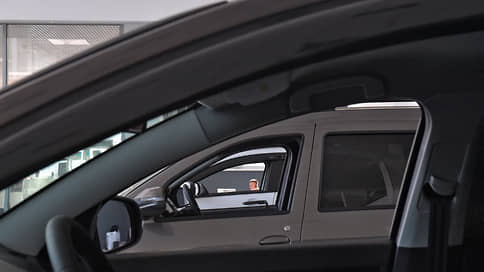Car prices continued to rise in September
[ad_1]

The rise in car prices in the Russian Federation, which began in August against the backdrop of rising scrap collections and the weakening of the ruble, continues in September. On average, according to a survey of dealers conducted by Kommersant, the increase in price ranged from 4%, reaching 20% in some cases. Moreover, market participants say that brands have not yet transferred all the new costs into prices and can still contain them. Discount programs are even maintained on the market – analysts believe that this indicates that brands are cautious in a highly competitive environment. Thus, the rise in car prices will inevitably continue.
Against the backdrop of an increase in recycling collection from August 1 and a simultaneous fall in the ruble exchange rate, car prices went up massively. According to NAPI, the increase in prices amounted to 0.1–14.3%. Recommended retail prices have been updated for 127 trim levels – for comparison, there were only 52 of these in July.
Among domestic players, prices increased for individual configurations and models of Lada and one configuration of the UAZ “Patriot” by 1.4–5% and 8.3%, respectively, as well as immediately by 10.1–11% for the “Moskvich 3” and “Moskvich 3” configurations. Moskvich 3E”. Some brands, like Haval, increased prices twice back in August – for example, on the GWM Poer KingKong pickup truck and the Haval M6 crossover. So, in early August, Poer KingKong went up in price by 200 thousand rubles, and then in the second half of the month by the same amount, overall increasing in price by 6.3–6.7% (depending on the configuration).
The update of price lists continued in September: according to “Price Auto”, Jetour brand cars increased in price by 50 thousand rubles. in August and the same in September (or by 1.6–2%). Chery in September increased prices for eight officially sold models (by 30–70 thousand rubles, or 1.1–2.1%). The concern told Kommersant that they were reviewing the cost against the backdrop of exchange rate fluctuations, recycling fees, and logistics.
In September, Lada continued to rewrite its price tags: the higher Granta trim levels increased in price (by 10–60 thousand rubles). Let us remember that AvtoVAZ said that the price adjustment for more equipped modifications is associated with their configuration with additional options, including from foreign suppliers or using imported subcomponents and raw materials.
Dealers interviewed by Kommersant agree that price increases will continue.
“In September and October there will be additional steps to change the cost of cars,” says Avtodom CEO Andrei Olkhovsky. He explains that the recycling fee “has already been applied to pricing, but this does not mean that importers immediately included it additionally in the price.” “They will win back the new costs, but they will do it in such a way that the impact on sales and profitability is the least sensitive,” says Mr. Olkhovsky, estimating the price increase since the beginning of August at 12–16% “according to a number of models that are the focus of control.” .
Andrei Olkhovsky clarifies that the greatest increase in prices was for those brands that were imported at a higher yuan rate. “Those who hedged the yuan were able to maintain prices and even now can still maintain them. The price situation is determined by the competence of the importer’s financial service,” the dealer concludes.
Director of Rolf South and Rolf Veshki Nikolai Ivanov estimates the increase in prices at 2–4% for official distributors and 9–12% for “alternative supply channels.” The largest increase, he notes, was for models and trim levels with an engine of more than 3 liters and an initially high foreign exchange price. Mr. Ivanov believes that “the current price did not make up for the difference in exchange rates, as well as the new recycling rate” and therefore “the price increase will continue.”
The increase in the recycling fee, as well as the volatility of the ruble exchange rate, has not yet been fully reflected in the cost of new cars, agrees Evgeniy Zhitnukhin, head of the dealership department of the Fresh automobile marketplace. He points out that the increase in prices most affected cars with an engine capacity of 2–3.5 liters, imported through parallel imports—their cost increased by about 20%.
“In August, cars became more expensive due to the fall in the ruble exchange rate and an increase in the recycling fee; the price increase ranged from 120 thousand to 600 thousand rubles. depending on the make, model and configuration,” says Renat Tyukteev, deputy general director for sales of new cars at Avilon AG. “However, even despite the stabilization of the ruble exchange rate, prices will continue to rise this year.” According to his assessment, cars imported through parallel imports will rise in price faster, “since Chinese brands that have built official dealer networks are pursuing a fairly restrained pricing policy.”
Despite the rise in prices, there are still promotions and discounts on the market. Chery indicated that their cars have a “Direct Discount” program, explaining that “this can be considered a marketing ploy, and there is the possibility of its quick cancellation in case the situation destabilizes.”
“Discounts and special conditions are a sales technology; changing prices does not affect these programs in any way if we want to maintain sales,” states Andrey Olkhovsky. Renat Tyukteev points out that in order to curb the indicative rise in prices, a number of brands from China have halved the amount of support compensated to dealers, which will “halve the size of discounts.” Nikolai Ivanov also says that OEM brands have reduced support.
Sergei Udalov from Avtostat points out that in conditions where demand and competition are relatively high, brands behave cautiously, “testing the situation” with small price adjustments and discounts. He believes that the gradual rise in prices will continue, and if there is any instability – for example, with supplies – brands may abandon support programs.
[ad_2]
Source link





